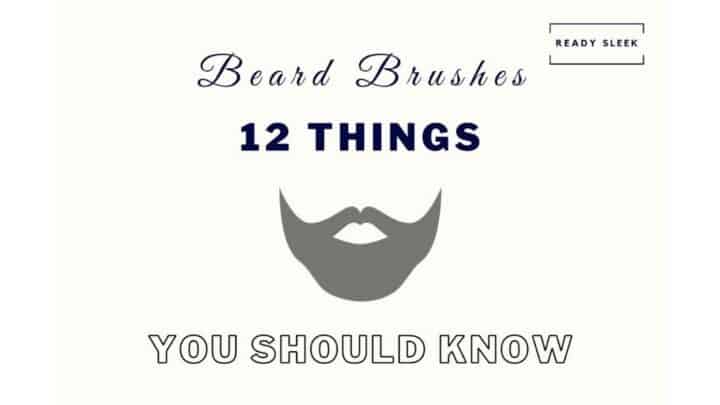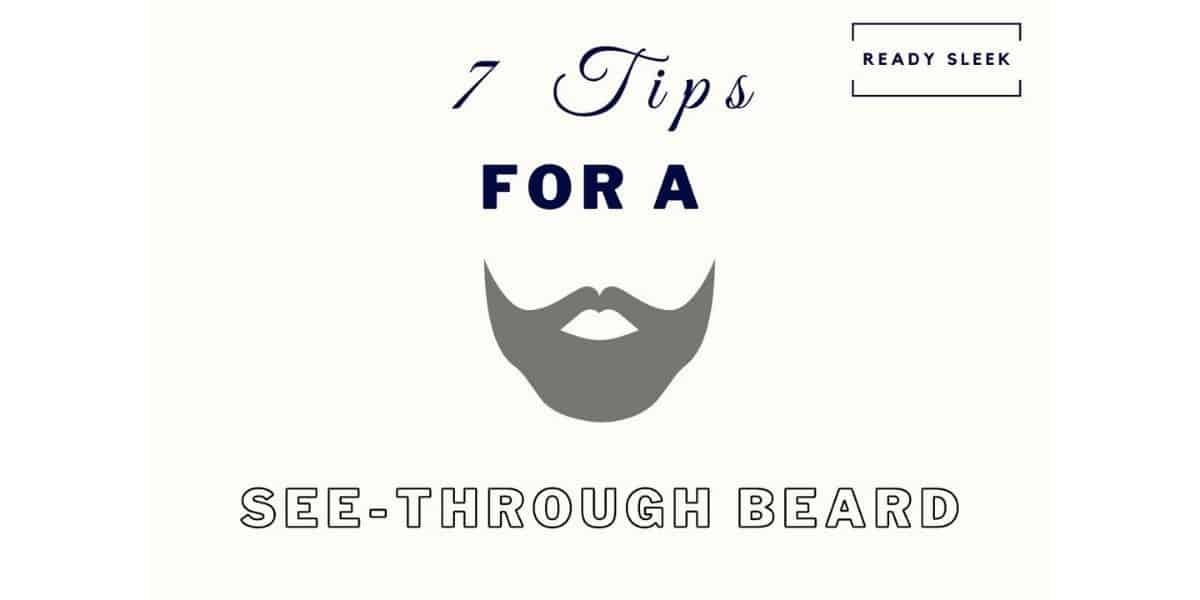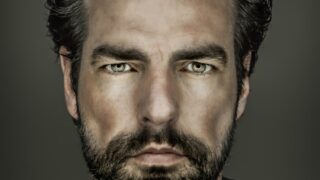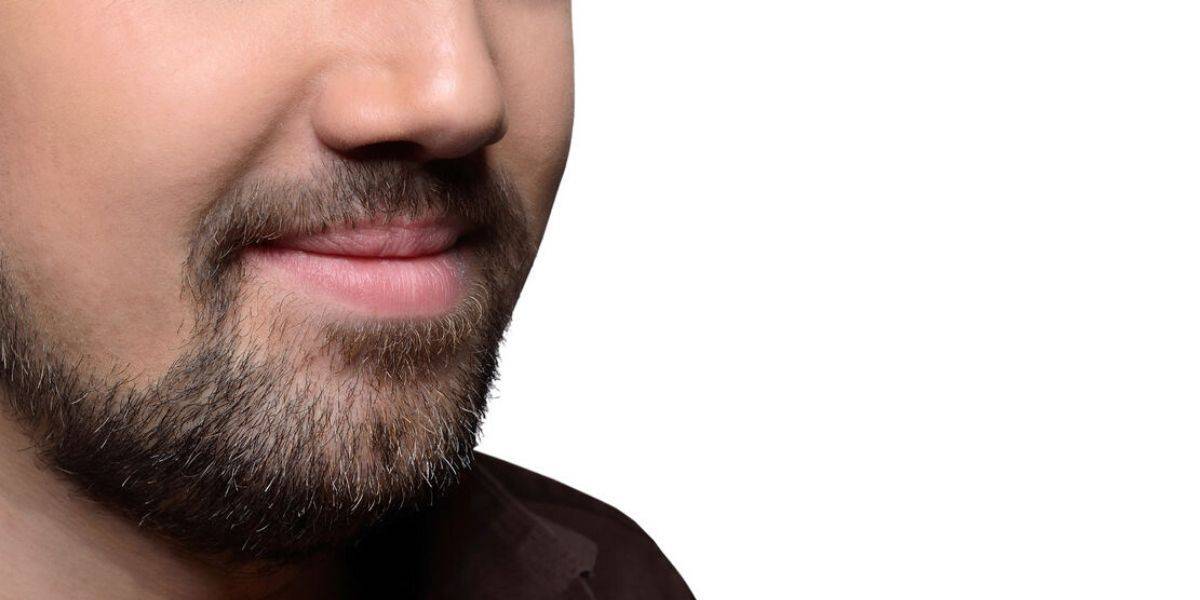It’s a pillar of proper beard grooming and yet there are plenty of men who either ignore it or don’t do it regularly.
Beard brushing is important to get to grips with if you want a beard that looks full and well-maintained.
We’re about to go through some important answers to questions around beard brushes and beard brushing that are often asked yet rarely answered properly.
Once you’ve read them, you’ll have a much better understanding of why beard brushing is so important, as well as how it differs from the many other beard grooming tools out there.
Let’s get to it.
1. Do You Need A Beard Brush?
Once you have three to four weeks of growth, you need a beard brush. This is to train the beard to grow in your desired direction over time, as well as to distribute natural oils.
It should probably be the first beard grooming tool you buy.
Why? Because the sooner you start doing it, the better.
However, before the 3-week mark, you probably won’t have enough length to really benefit from it.
The benefits of beard brushing, however, are widely recognized.
Without one, you’ll most likely find that strays and flyaways start to rear their heads. Beard hair is notorious for growing in all sorts of directions. It’s very unlikely to grow out straight, flat, and in your desired direction without training it.
That’s exactly what a beard brush can do for you.
With repeated use, over time, it’ll train the beard to grow straighter, flatter, and in your preferred direction. Most of the time, this will be downward and toward the chin.
Beard brushes are also great at redistributing natural oils which can otherwise accumulate and cause greasiness and clumping.
The bristles of a beard brush can distribute these oils evenly across the beard and from root to tip. This gives it a nice and aesthetically pleasing sheen but also reduces the risk of greasiness.
They’re also great at distributing artificial oils like beard oil. That’s why it’s better to brush your beard after using beard oil to really benefit from this effect.
But what sort of beard brush will you need?
A boar bristle beard brush.
Boar hair is generally quite similar to beard hair in texture and so will glide through it easily and with minimal tugging and pulling.
Avoid nylon or synthetic beard brushes. Although they may be cheap, they generally do more harm than good. They’re also usually not anti-static and so can cause frizzing in addition to the tugging and pulling that usually occurs.
2. Are Beard Brushes Worth It?
In terms of value for money, yes, beard brushes are worth it. For a relatively low cost, you can get a beard brush that will, over time, lead to a much fuller-looking and well-maintained beard.
Although boar bristle beard brushes may not be as cheap as synthetic ones, it’s definitely worth investing in one.
They aren’t expensive by any means but a good one will most likely cost around $10-20.
Although this may seem a little pricey for a brush, a good one will be built to last and the benefits far outweigh the cost.
That’s the reason they’re worth the money.
But do beard brushes actually work and are they good?
Yes, beard brushes work and most men will eventually see significant benefits from using one daily.
However, the results aren’t instant.
You do need to use one regularly in order to eventually see the benefits from them. Unfortunately, the main reason men get bored of them and stop using them is that they don’t see instant results.
Stick with it.
You’ll eventually notice a neater, flatter, and straighter beard. Over time, you’ll need to brush less to produce the same effect.
That’s the beauty of a well-trained and well-maintained beard.
3. Beard Brushes: Soft Or Firm Bristles?
Shorter beards can still benefit from beard brushes with soft bristles. Longer and thicker beards would be better off with harder and firmer bristles that are able to penetrate through to the deeper hair.
If you get yourself a boar bristle beard brush, you’ll usually know what to expect. In general, they’re firm enough to straighten and flatten thick or untidy beards, but not so hard that they cause discomfort or tugging.
However, boar bristles can still vary in terms of how soft or firm they are. Many beard brushes also come in different versions – one with “soft” bristles and one with “firm” bristles, for instance.
Nylon and synthetic bristles are usually firmer than boar hair and also not as effective.
Because of this, it’s important not to assume that the firmer the bristles are the more effective they’ll be.
Boar hair is great because it’s firm enough to get the job done but still soft enough to glide through facial hair easily most of the time. Being of a similar texture to facial hair is also another reason they’re helpful.
But in general, the longer, thicker, or more unruly your beard is, the firmer you’ll want those bristles to be.
4. Beard Brush Vs Regular Brush: What’s The Difference?
The main difference between beard brushes and regular brushes is usually the shape. Regular brushes are more likely to come with a long handle, while you’re more likely to find beard brushes that are round or oval-shaped.
Although there are plenty of beard brushes that also come with long handles (like round brushes for instance), many of them do choose to go for those oval or round shapes.

Why?
It’s just easier to grip these when brushing your beard, especially because you’re usually brushing downward.
They’re also a lot more portable and make for easy styling on the go.
It’s difficult to differentiate beard brushes from regular brushes when it comes to the bristles. Both types of brushes can come with soft bristles, firm bristles, boar bristles, synthetic bristles, and so on.
Ultimately, you’ll want a dedicated brush for your beard – try not to double up with a hairbrush even if your hairbrush happens to be made with boar hair.
This will prevent overuse of your grooming tools and will allow them to last longer overall.
Speaking of which…
5. How Long Do Beard Brushes Last?
With daily use, you can expect a boar bristle beard brush to last 6 to 8 months.
Although you can continue using one beyond this point without much harm done, you’ll most likely notice it becoming less effective over time.
This is because the bristles start to fall out or dull.
One thing to note is that the amount of time it takes to stop becoming as effective will definitely be influenced by how you use it.
If you’re a pretty aggressive brusher, there’s a good chance those bristles aren’t going to last you as long.
In addition, if you brush very frequently, you can also expect to have to replace that brush more frequently.
So, don’t overbrush – once a day is usually enough for most men. However, the number of times you brush per day will ultimately be influenced by your style, texture, and length.
It can even be influenced by the climate you’re in, as humidity can cause frizziness in facial hair and lead to you having to brush your beard more often.
But don’t overdo it.
In addition, try and be gentle with it. During your morning grooming routine this can sometimes be difficult, particularly when you’re in a rush.
You need to be firm enough when brushing to really get the job done (flattening, straightening, and training), but soft enough so as not to cause unnecessary tugging and pulling.
Following these tips should mean that beard brush lasts longer than average.
6. Should You Brush Or Comb A Long Beard?
When you’ve got a long beard, you’ll want to regularly brush the beard to train it and distribute oils, but also comb it to style and detangle it.
With long-beard-grooming, the two work hand-in-hand.
You’ll want to start brushing it first – after around 3-4 weeks of growth is usually a good rule-of-thumb to follow.
Once you’ve got around 8 weeks of growth the beard will be long enough to benefit from a beard comb.
Although it may seem as though they do the same thing, this couldn’t be further from the truth.
The teeth of a beard comb and longer than the bristles of a brush. Because of this, they’re able to really dig into the deeper parts of the beard and detangle them. Without doing so, clumping of the deeper hair can become an issue.
Combs are also better than brushes when it comes to styling. Men with long beards are more likely to need a styling device to keep things looking the way they want it to look.
So, it’s not one or the other.
When you’ve got a long beard, you’ll need both a beard brush and a beard comb.
7. Should You Brush Your Beard Before Bed?
It’s usually unnecessary to brush your beard before bed, especially if you’ve already brushed it at least once earlier that day.
Remember, over brushing is a bad habit and something you’ll want to avoid no matter how tempting it may be.
Although brushing before bed may keep it neater and reduce the risk of tangling overnight, in general, it won’t be enough.
You can expect the beard to look relatively untidy in the morning no matter how much you brushed it the night before.
You’ll need to brush it again in the morning in any case, so usually, there isn’t much point in doing it the night before.
Doing so simply increases the risk of over brushing and this will do more harm than good.
Save your brushing for your morning routine with the occasional touch-up during the day if you think it’s necessary.
8. Beard Brushes: Boar Vs Horse Hair
Horse hair beard brushes usually have softer bristles than boar hair brushes and also have less scaly cuticles. This makes them better for shorter and thinner beards than longer or thicker ones.
Horse hair beard brushes aren’t as popular as boar bristle beard brushes but are becoming more commonly available and seen.
In general, boar hair is more similar in texture to facial hair and so glides through it easily. It’s also firmer than horse hair and so is more likely to push through thicker beard hair and have its intended effect.
There’s no right or wrong answer here.
Some men do respond better to horse hair than boar hair brushes. It’s just a case of figuring out which one you prefer.
But do take the thickness and length of your beard when making your decision.
9. Beard Straightener Vs Beard Brush
Unlike a straightforward beard brush, a beard straightener uses direct heat to enhance the straightening and flattening effect of its bristles. Because of this, they’re also sometimes called “heated brushes”.
Beard straighteners are similar to flat irons.
Ultimately, whether you choose to use one to help straighten out your beard should depend on a few factors.
One of them will be whether you feel it’s necessary for your specific beard. Shorter and thinner beards will most likely not need one to keep their beard in check.
Thicker, longer, frizzier, or just generally more untidy beards may well benefit from the effects of a heated brush.
However, there are many who feel that they can achieve a similar effect by simply using a regular beard brush (such as a round brush) while blow-drying with a regular blow-dryer.
Doing so could save you having to shell out the cash for a dedicated beard straightener.
The benefit of a beard straightener over a regular boar bristle beard brush (without heat) is that the results are pretty instantaneous.
Although regular beard brushes can lead to great results for your beard, straightening and flattening the beard over time, it won’t be instant.
It takes dedication – brushing on a daily basis and incremental improvements over time.
But unlike a heated brush, boar bristle beard brushes have the additional benefit of redistributing natural oils, giving the beard a nice and gentle sheen.
Ultimately, if you do use a heated brush, do still make a point to use a boar bristle brush as well now and again for this very reason.
10. Beard Brush Vs Wave Brush: What’s The Difference?
While beard brushes are designed to straighten, flatten, and train facial hair, wave brushes are designed to enhance the natural curl of scalp hair without causing frizz. The bristles of wave brushes are generally spaced wider apart than those of beard brushes.
Both wave brushes and beard brushes usually have natural bristles, such as those made of boar hair or horse hair.
They also both usually have handles made of wood as opposed to plastic.
However, the two types of brushes are intended for very different purposes, despite often looking very similar to each other.
When used properly, a wave brush can make a curly-haired man’s wave a lot more prominent – a ripple effect that has become a lot more popular in recent years.
Beard brushes aren’t designed to achieve this effect and so will likely be ineffective at doing so.
With narrower-spaced bristles, beard brushes are designed to train facial hair to grow in your desired direction over time, while neatening, straightening, and flattening it as well.
11. Should You Use Beard Balm Before Or After Brushing
Beard balm should be used after brushing the beard in order to tame strays and flyaways in the final stages of styling.
Once the beard has been neatened and straightened with a beard brush, the gentle hold of beard balm can be used to keep things in place.
It may not have as much hold as something like beard wax, but it’s enough for shorter beards or where the final style isn’t as complex.
It’s light and comfortable to use.
It isn’t heavy or overbearing – that’s the beauty of beard balm.
However, if you’ve got particularly thick, coarse, or untidy beard hair you may be better off using something more heavy-duty like beard wax to keep things in place.
12. Can You Use A Shoe Brush On Your Beard?
Don’t use a shoe brush on your beard. Although a clean shoe brush with natural bristles is unlikely to do much damage to a beard, the bristles are unlikely to be firm enough to properly tame the facial hair.
Using an unclean shoe brush that’s already been used on your shoes shouldn’t be getting anywhere near your beard, however.
Because of this, it’s generally better to have a separate shoe brush and a separate beard brush.
Sure, it’s more hygienic.
But the bristles of a beard brush will usually be firmer and more effective at properly getting through facial hair, particularly thicker hair.
Shoe brushes, particularly premium ones, often have natural bristles such as those made from goat hair or horse hair. However, the more budget options also have synthetic bristles which often do more harm than good when it comes to beard brushing.
They’ll also just be less effective.
Conclusion
There you have it – 12 things every beardsman should know about brushing their beard.
It may not be rocket science, but it’s something that a lot of people neglect because it takes time and dedication.
Over time, the benefits of beard brushing will become more and more obvious and it will ultimately become an essential part of your routine.
Enjoy.
Ready Sleek founder. Obsessed with casual style and the minimalist approach to building a highly functional wardrobe. Also a fan of classic, vintage hairstyles.







